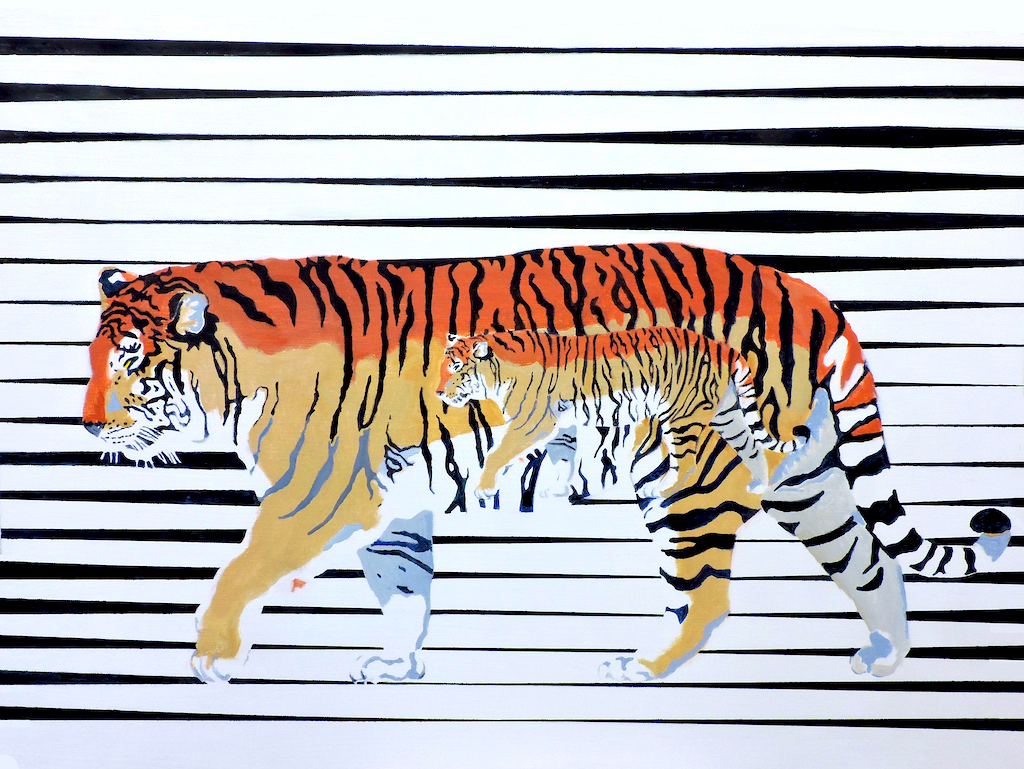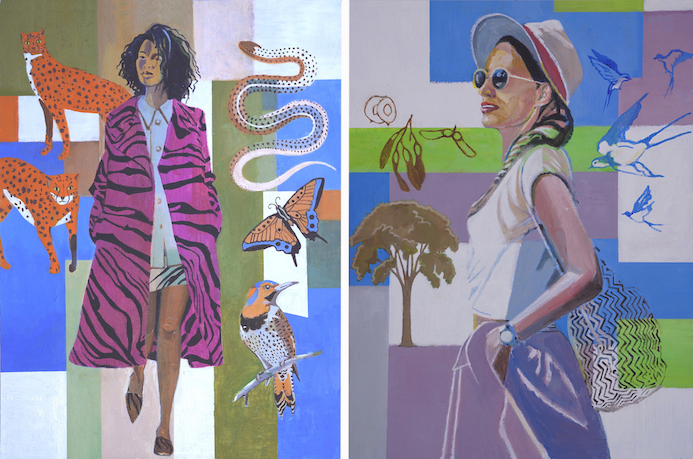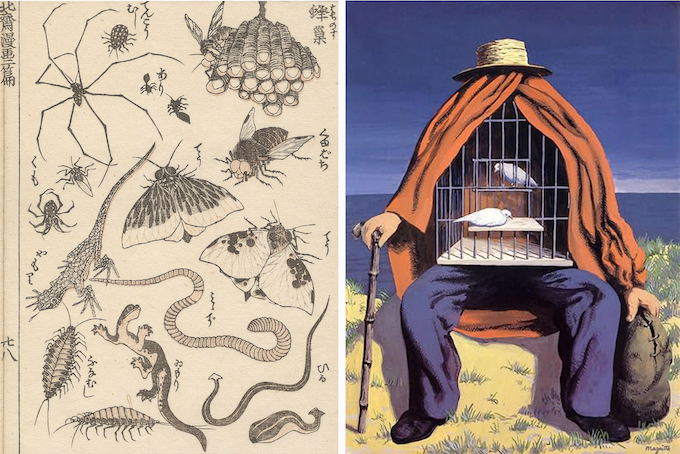If I weren’t an artist, I would be a biologist. In my recent paintings, I surround human figures with images of nature taken from science textbooks and popular media. Patterns attract me. When I look at patterns, I try to explore how the human world collides with a more natural realm—is it possible to separate the two?

Often there’s a theme: night and day, animal locomotion, markings, electricity, flying seeds, flying birds, the origins of life. The surrounding animals act as emblems and enigmas. Each picture is a kind of puzzle: what is the relationship of foreground and background? While most viewers will come up with their own answers, many will agree: We are part of nature, indivisible from nature, dependent on nature. But what is nature and how do we connect to it? Not so easy to answer.

I’m an art historian and retired teacher; didacticism is part of my approach, but I try to play with it. I’ve been influenced by Hokusai’s manga, the way he fills pages with seemingly random sets of people, animals, objects and occupations. Hokusai has three over-riding concerns: human skills, common ground (or related sets of images), and engagement with nature. Hokusai treats his image collages like a game, full of surprises, humour, and great sympathy for the world in both its humble as well as epic manifestations. I’m also impressed by Rene Magritte’s surrealist paradoxes. There are a great many elements from the natural world in Magritte’s work, but treated with a cool approach, so we engage with the paradox and not the object. Hokusai, of course, worked in mass media, ukiyo-e prints, that use flat areas of colour.

I find the flatter my painting style and the cooler my approach, the more effective the image becomes. I hope viewers agree.
